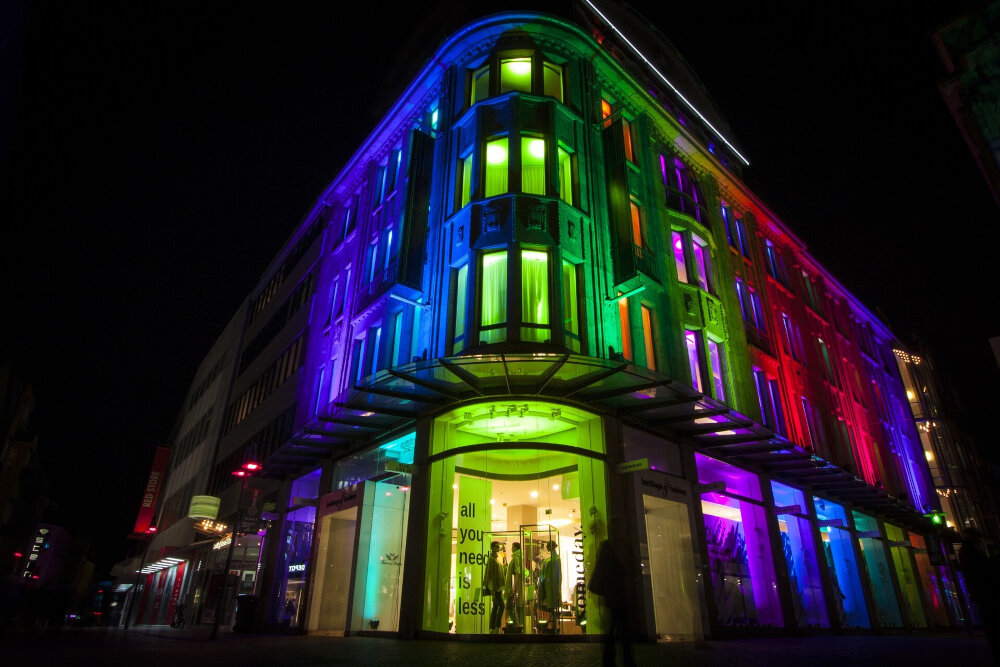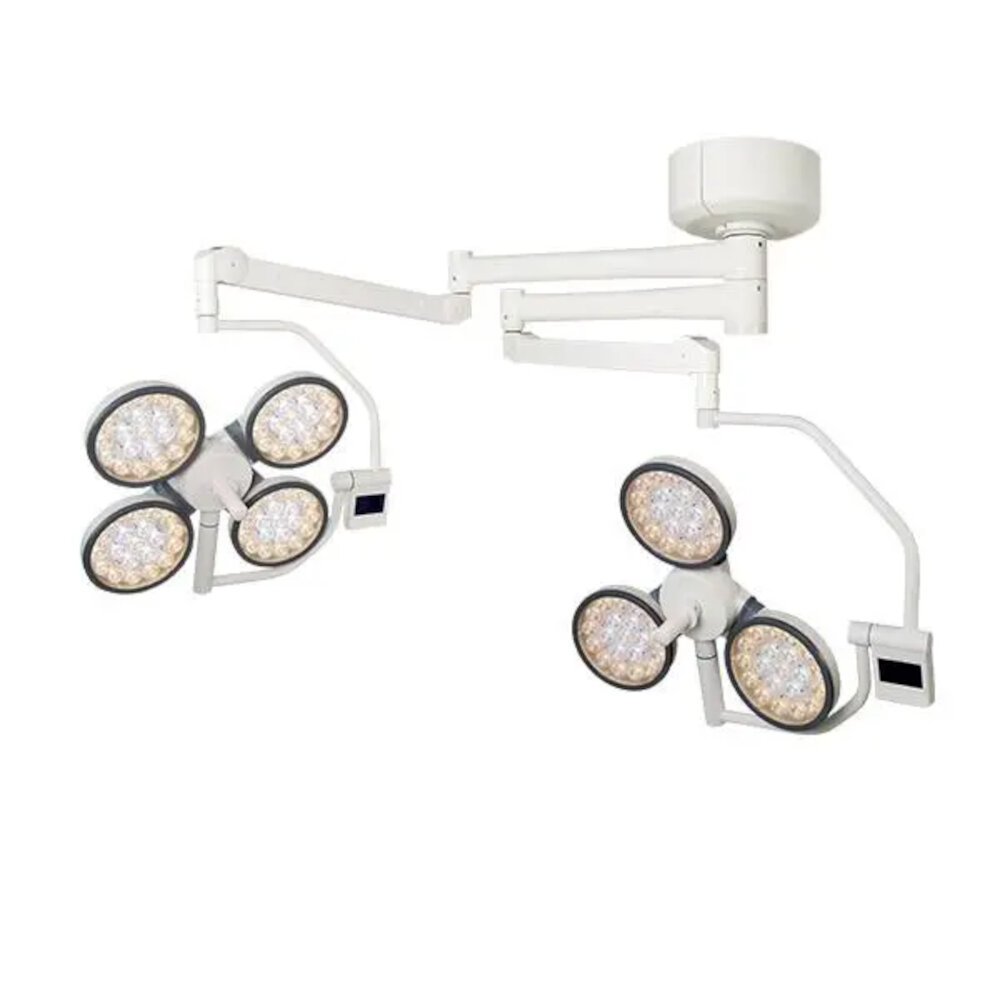Troubleshooting LED Lights: Why Do They Flash When Turned Off?

As LED lights become more prevalent in homes and businesses, it’s important to understand how to troubleshoot them when issues arise. One of the most common problems people encounter with LED lights is flashing or flickering when they’re turned off. This can be frustrating and confusing, but there are a few potential causes and solutions to this issue. In most cases, flashing LED lights when turned off can be attributed to residual voltage in the circuit. LED lights are incredibly efficient and require very little power to operate, but they can still retain a small amount of voltage even when turned off. This can cause the lights to flash or flicker, particularly if they’re connected to a dimmer switch or other type of lighting control system. Understanding the root cause of this problem can help you take the necessary steps to fix it and ensure your LED lights are functioning properly.
LED lights, or Light Emitting Diodes, are a type of lighting technology that has become increasingly popular in recent years due to their energy efficiency and long lifespan. Unlike traditional incandescent bulbs, which work by heating a filament until it glows, LEDs use a semiconductor to convert electricity into light. This means that they consume far less energy and generate less heat than traditional bulbs, making them ideal for a wide range of applications, from home lighting to streetlights and traffic signals. While LED lights are generally very reliable and long-lasting, they can sometimes exhibit unusual behavior, such as flashing when turned off, which can be a sign of an underlying issue with the electrical circuit or the bulb itself.
The purpose of the article titled \Troubleshooting LED Lights: Why Do They Flash When Turned Off\ is to provide a comprehensive explanation of the phenomenon of LED lights flashing even when they are turned off. The article delves into the technicalities of LED lights and explores the various factors that contribute to this issue, such as residual current, electromagnetic interference, and faulty wiring. It also offers practical solutions for troubleshooting the problem, such as using a relay or installing a capacitor. By providing a detailed analysis of this common issue, the article aims to help readers better understand their LED lights and provide them with the knowledge and tools they need to fix the problem.
Understanding LED Lights

Understanding LED lights is important in troubleshooting any issues that may arise with their functionality. LED lights, or light-emitting diodes, are a type of lighting technology that have gained popularity in recent years due to their energy efficiency and long lifespan. Unlike traditional incandescent bulbs, which rely on a filament that produces light when heated, LEDs use a semiconductor to emit light when an electrical current passes through it. This makes them much more durable and efficient, which is why they have become the go-to option for many lighting applications. However, LED lights can sometimes exhibit unexpected behavior, such as flashing when turned off. This can be due to a variety of reasons, including residual voltage in the wiring, compatibility issues with the dimmer switch, or a faulty driver circuit. By understanding the underlying principles behind LED technology, it becomes easier to diagnose and address any issues that may arise. Whether you are a homeowner looking to troubleshoot your lighting system or a professional electrician working with LED lights on a regular basis, a solid understanding of LED technology will be invaluable in ensuring that your lights are functioning properly and efficiently.
Light Emitting Diode (LED) is a type of semiconductor device that emits light when an electric current is passed through it. An LED is made up of two types of semiconductor materials, one that has an excess of electrons (n-type) and the other that has a deficiency of electrons (p-type). When a voltage is applied across the two materials, the electrons move from the n-type material to the p-type material, releasing energy in the form of light. The color of the light depends on the type of semiconductor materials used. LEDs are efficient, durable, and long-lasting, making them popular in various applications, including lighting. However, when LED lights flash when turned off, it could indicate a problem with the wiring, the switch, or the LED driver.
LED lights and traditional lighting differ in several ways. Firstly, LED lights are more energy-efficient and have a longer lifespan than traditional lighting. Secondly, LED lights emit light in a specific direction, making them more efficient for task lighting. Traditional lighting, on the other hand, emits light in all directions, resulting in wasted energy. Thirdly, LED lights do not contain hazardous materials such as mercury, making them safer for the environment. Lastly, LED lights do not emit heat, unlike traditional lighting, which can become hot and pose a fire hazard. These differences may contribute to the flashing of LED lights when turned off, as the technology behind them is unique and may cause different issues than traditional lighting.
Reasons for LED Lights Flashing When Turned Off

LED lights are the latest innovation in the field of lighting technology, and they have become increasingly popular in recent years due to their energy efficiency and long lifespan. However, despite their numerous benefits, some users have reported issues with their LED lights flashing unexpectedly when turned off. There are several reasons why this may occur, ranging from faulty wiring to power surges. One of the most common reasons is due to residual voltage in the circuit, which can cause the LED lights to continue to emit a small amount of light even when turned off. This is often caused by poor quality or incompatible dimmer switches, which can interfere with the voltage regulation process. Another possible cause of LED lights flashing when turned off is due to electromagnetic interference. This can occur when other electrical devices in the vicinity of the LED lights are turned on or off, causing interference with the circuitry. In some cases, this may be due to the proximity of the LED lights to other electrical devices, such as TVs or computer screens. In other cases, it may be due to faulty wiring or a lack of proper grounding. To resolve these issues, it is important to isolate the LED lights from any other electrical devices and ensure that they are properly grounded to prevent electromagnetic interference.
Electrical issues can often cause LED lights to flash when turned off. This phenomenon is referred to as ghosting, and it occurs when residual electrical energy is trapped in the circuit. Ghosting can be caused by a variety of factors, including faulty wiring, incorrect dimmer settings, and incompatible LED bulbs. To troubleshoot ghosting, it is important to identify the root cause of the problem and take steps to address it. This may involve replacing faulty components, adjusting dimmer settings, or selecting LED bulbs that are compatible with the circuit. By addressing electrical issues promptly and effectively, it is possible to enjoy the full benefits of LED lighting without experiencing unwanted flashing or ghosting.
Incorrect wiring is a common culprit behind LED lights flashing when turned off. This happens when the wires are not connected properly or when the polarity of the wires is reversed. When the power supply is turned off, the LED lights continue to receive power from the circuit, causing them to flash. This can be dangerous as it can lead to overheating of the wiring and cause a fire hazard. It is important to ensure that the wiring is correctly installed and connected to prevent this issue. If you are unsure about the wiring, it is recommended to seek professional assistance to avoid any potential hazards.
Residual current is an electrical phenomenon that occurs when an electrical circuit is not completely insulated or grounded. It refers to the flow of electrical current that remains in a circuit even after the power source has been turned off. In the context of LED lights, residual current can cause them to flash or flicker when turned off, as the small amount of remaining current can still power the LEDs, albeit at a much reduced level. This can be a frustrating and potentially dangerous issue, as residual current can indicate an electrical fault or inadequate grounding in the circuit. It is important to properly troubleshoot the source of residual current to ensure the safety and functionality of electrical systems.
Power surges are sudden and brief increases in voltage that can cause damage to electronic devices, including LED lights. These surges can be caused by lightning strikes, power outages, or even the sudden turning on or off of large appliances in the same circuit. They can also be caused by faulty wiring or power distribution systems. Power surges can cause LED lights to flash when turned off because the excess voltage can cause the light’s capacitors to discharge, resulting in a brief burst of light. To protect LED lights from power surges, it is recommended to use surge protectors or voltage regulators, ensure proper grounding, and avoid overloading circuits.
Troubleshooting LED Lights

LED lights are increasingly becoming popular due to their energy efficiency, long lifespan, and durability. However, these lights can sometimes be problematic, especially when they start flashing even when turned off. This flashing can be caused by several factors, including a faulty switch, a wiring issue, or even interference from other electronic devices. One common cause of LED lights flashing when turned off is a residual electrical charge in the circuit. This residual charge can be caused by a faulty switch that doesn’t completely turn off the power supply. It can also be caused by faulty wiring, which can create a loop that allows electricity to continue flowing even when the switch is turned off. Another cause is interference from other electronic devices that can create electrical noise that affects the LED lights. Troubleshooting LED lights requires a basic understanding of how they work and the possible causes of the flashing.
When troubleshooting LED lights that are flashing when turned off, there are a few steps to take. First, check the wiring connections to ensure they are secure and properly connected. Next, inspect the switch or dimmer to ensure it is compatible with LED lights and that it is not faulty. If the switch or dimmer is not the issue, check the LED driver to ensure it is functioning correctly. It is also important to verify that the LED bulbs being used are compatible with the driver and the dimmer. If none of these steps resolve the issue, it may be necessary to consult with a professional electrician to identify any underlying electrical issues. By following these troubleshooting steps, you can identify the root cause of the flashing LED lights and take steps to resolve the issue.
Testing the switch is an essential step in troubleshooting LED lights that flash when turned off. The switch is responsible for controlling the flow of electricity to the lights, and if it is faulty, it can cause the lights to flash even when turned off. To test the switch, you’ll need a multimeter to check the continuity of the switch contacts. First, turn off the power supply to the lights and disconnect the switch. Then, use the multimeter to test the contacts to see if they are working properly. If the multimeter shows that the switch contacts are open when the switch is off, then the switch is functioning correctly. However, if the contacts show continuity when the switch is turned off, then it’s time to replace the switch.
Inspecting the wiring is an essential step in troubleshooting LED lights that flash when turned off. The electrical wiring of LED lights is a complex network of connections that can deteriorate over time due to wear and tear, damage, or poor installation. Before inspecting the wiring, make sure to disconnect the power source and allow the lights to cool down. Check for loose connections, frayed wires, and damaged insulation. Use a multimeter to test the voltage and continuity of each wire, and replace any faulty components. Properly securing and repairing the wiring can prevent unnecessary flashing and ensure the safe and efficient operation of your LED lights.
When troubleshooting LED lights that are flashing when turned off, using a multimeter can be a helpful tool. A multimeter is a device that measures electrical properties such as voltage, current, and resistance. To use a multimeter, first, ensure that it is set to the appropriate mode for the measurement you want to take. Then, connect the probes to the circuit or component you want to measure. By measuring the voltage across the LED when it is turned off, you can determine if there is residual voltage causing it to flash. Additionally, measuring the resistance across the LED can help determine if it is functioning properly or if there is a short circuit. Using a multimeter can provide valuable information when troubleshooting LED lights and can help identify the root cause of the issue.
Preventing LED Lights from Flashing When Turned Off

LED lights are a popular choice for their energy efficiency and long lifespan. However, there can be some frustrating issues that arise with LED lights, such as flashing when they are turned off. This can be caused by several factors, including the wiring of the circuit or the quality of the LED driver. In order to prevent LED lights from flashing when turned off, it is important to take a few steps to troubleshoot the problem. One solution is to upgrade the LED driver, which can help regulate the current and eliminate any flickering or flashing. Another solution is to make sure that the wiring is properly installed and grounded, as faulty wiring can cause voltage fluctuations and contribute to the flashing issue. Additionally, using a dimmer switch that is specifically designed for LED lights can also help prevent flashing. By taking these preventative measures, LED light users can enjoy their energy-efficient and long-lasting lighting without the frustration of flashing when turned off.
Proper installation is crucial when it comes to LED lights. When they are not installed correctly, it can cause a multitude of issues, including flashing when turned off. One of the main causes of flashing is improper wiring, which can lead to a current leak. Additionally, if the LED lights are not grounded correctly, it can cause electrical interference that can also result in flashing. It is important to carefully follow the installation instructions and ensure that all connections are secure and in the correct position. Taking the time to install LED lights properly can prevent issues such as flashing and ensure that they function correctly for years to come.
When troubleshooting LED lights, it’s essential to ensure that they are plugged into a surge protector. A surge protector is a device that protects electrical appliances by diverting excess voltage to the ground. Without a surge protector, electrical surges and voltage spikes can damage the LED lights, causing them to flicker and flash when turned off. Surge protectors come in different sizes and types, so it’s important to choose one that can handle the wattage of your LED lights. By investing in a surge protector, you can protect your LED lights from damage and ensure that they function properly.
Upgrading the electrical system is a crucial step to troubleshoot LED lights that flash when turned off. With the constant evolution of technology, it’s essential to ensure that the electrical system in your home or office is up to date. An outdated electrical system can cause a myriad of issues, including overloading the system and causing voltage fluctuations, which can lead to LED lights flashing when turned off. Upgrading the electrical system involves replacing old wiring, circuit breakers, and other components with modern ones that can handle the increased electricity demands of modern appliances and electronics. This not only improves the performance of your LED lights but also enhances the safety and efficiency of your electrical system.
LED lights flashing when they are turned off is a common problem that many people face, and it can be caused by various factors. One of the most common reasons is the residual current in the wiring, which causes the LED lights to flicker. This can be solved by installing a capacitor or a resistor in the circuit to remove the residual current. Another cause of LED lights flashing when turned off is the faulty dimmer switches, which do not fully turn off the lights. Upgrading the dimmer switches to LED compatible ones can solve the problem. Additionally, LED lights can flash when they are connected to the same circuit as other devices, and this can be solved by separating the circuits or installing a noise filter. By identifying the cause of the problem and implementing the appropriate solutions, you can enjoy a consistent and uninterrupted lighting experience in your home or workplace.
Proper installation and maintenance of LED lights are crucial to ensure their longevity and optimal performance. Incorrect installation may cause electrical problems that may lead to flickering or flashing of the lights when turned off. Additionally, improper maintenance may cause the lights to accumulate dust and dirt, which can impact their brightness and efficiency. Regular cleaning and inspection of the bulbs, wiring, and fixtures can help prevent issues and extend the lifespan of the LED lights. By taking the time to install and maintain LED lights correctly, you can enjoy their energy efficiency and cost-effectiveness for years to come.
Conclusion

In conclusion, troubleshooting LED lights that flash when turned off can be a frustrating experience, but with a little bit of knowledge and patience, the issue can be resolved. From power surges to faulty wiring, there are many potential reasons why LED lights may continue to flash when turned off. It is important to carefully inspect the wiring and connections, and consider installing a surge protector or voltage stabilizer to protect against power fluctuations. By taking these steps and utilizing the expertise of a professional electrician if necessary, you can ensure that your LED lights operate smoothly and without any unwanted flashing.




